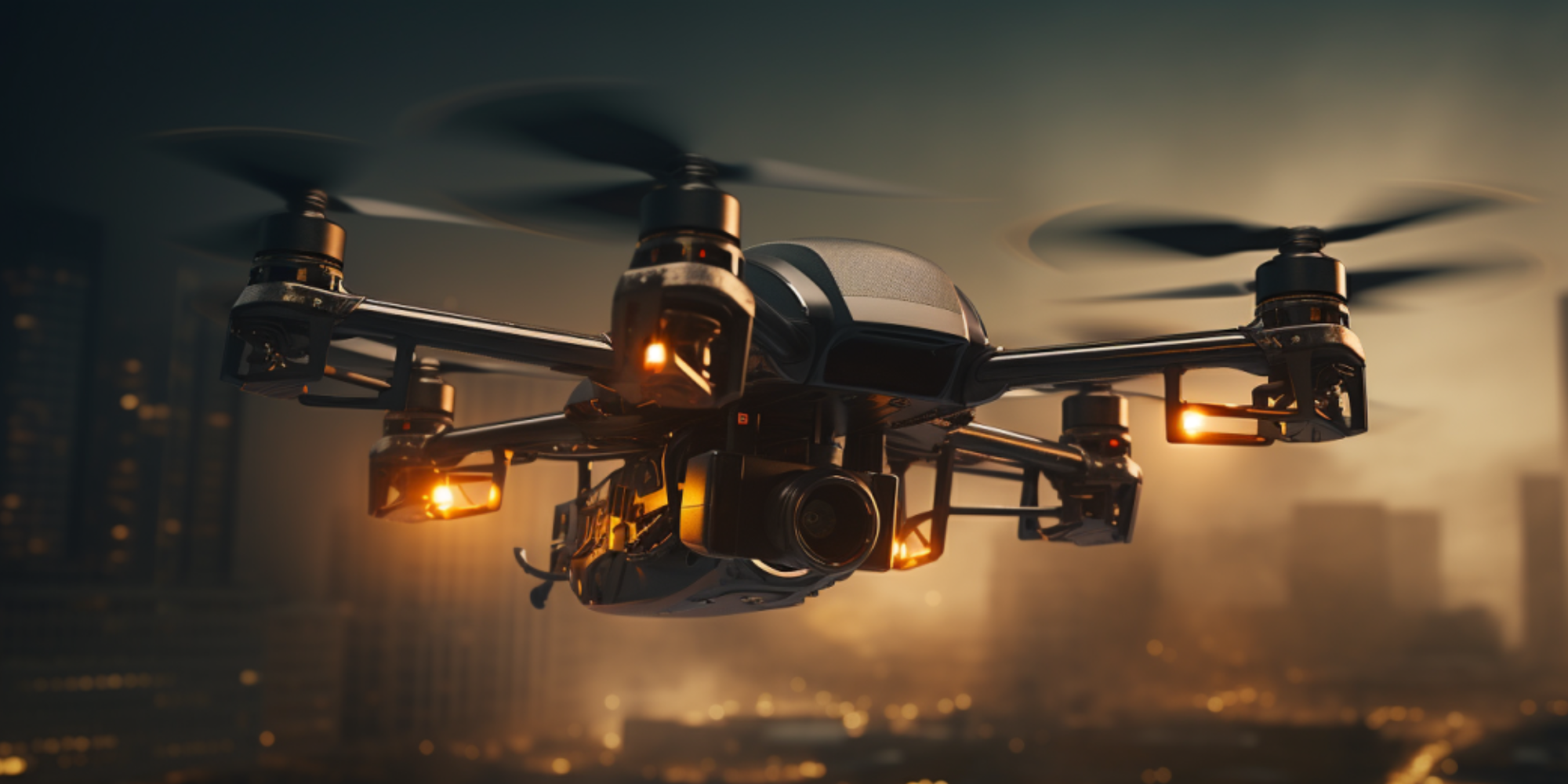
As we stand on the brink of a technological revolution, the allure of drone technology in India has never been more compelling. Beyond proving game changers in modern warfare and security, reshaping industries and contributing to environmental conservation, drones have swiftly transitioned from novelties to indispensable tools across various sectors.
Recent reports by IMARC and Digital Sky project an impressive Compound Annual Growth Rate (CAGR) of 10.23% for the Indian drone market from 2023 to 2028. As we near the end of 2023, the number of registered drones in India has surpassed 15,758 units, showcasing a remarkable increase of over 2,000% between 2021 and 2023.
A paradigm shift
The transition from UAVs being confined to a select few use cases to now finding applications in diverse sectors reflects an unfolding narrative. Drones are gaining widespread adoption across defence, law enforcement, GIS (Geographic Information System), agriculture, construction, mining, and delivery services.
According to 1Lattice, the potential of the Indian enterprise drone market is estimated at $479 million, with agriculture, utilities, and public safety poised to be the key sunrise verticals. Enterprises are actively exploring diverse applications for drones, emphasising data collection and software development tailored to specific industries. The versatility of drone technology is used in surveillance, traffic management, land surveys, precision agriculture, progress monitoring, and medical deliveries.
Integrated ecosystems and tech advancements
In the dynamic landscape of the drone industry in India, a significant trend is the rise of integrated drone ecosystems, fostering collaboration among drone manufacturers, sub-system developers, software engineers, service providers, and regulatory bodies. This holistic approach seeks to establish a comprehensive framework, addressing diverse applications and business models.
The symphony of technological advancements propels remarkable improvements in drone capabilities, from extended battery life and increased operational range to cutting-edge sensors, cameras, and AI-based image intelligence features. This surge in capabilities empowers drones to perform intricate tasks seamlessly, navigating challenging environments with ease.
As the industry scales, a pivotal trend emerges in drone automation, driven by the impracticality of having one pilot for each drone. Innovations in artificial intelligence, machine learning, and computer vision are transforming drones into autonomous and intelligent entities.
Government initiatives and financial impetus
The growth of drone technology in India is intertwined with innovative advancements in hardware and software, buoyed by government initiatives. The introduction of the Drone Rules 2021 marks a pivotal moment, reflecting India’s ambition to lead the global drone sector by 2030. The formation of a Production Linked Incentive (PLI) Scheme of Rs 120 crore to boost this nascent industry showcases the government’s belief in drones and its commitment to fostering drone industry innovation as part of the Atmanirbhar Bharat initiative.
Additionally, by proactively supporting indigenous drone manufacturing through initiatives like the PLI scheme, import bans, and favourable export policies for drones the government aims to reduce import dependencies, elevate quality standards, and fortify safety protocols for drones made in India for the Indian and the global markets. These regulatory developments and financial support weave an intricate tapestry, envisioning India as a trailblazer in the global drone landscape. Simultaneously, the growing commercial use of drones necessitates specialised insurance, tailored to specific industries.

.thumbnailWrapper
width:6.62rem !important;
.alsoReadTitleImage
min-width: 81px !important;
min-height: 81px !important;
.alsoReadMainTitleText
font-size: 14px !important;
line-height: 20px !important;
.alsoReadHeadText
font-size: 24px !important;
line-height: 20px !important;

Navigating unprecedented growth for 2024 and beyond
Anticipating the trajectory of the drone sector in India through 2024 reveals a landscape poised for unprecedented growth, driven by key advancements in artificial intelligence, improved battery technologies, and enhanced data analytics.
Envisioning a future where drones seamlessly integrate into daily life, the prospect involves substantial progress in automation, broadened applications, and the establishment of a burgeoning drone industry contributing significantly to the nation’s technological prowess. This growth is underlined by a strategic focus on key sectors. From a revenue and value perspective, the defence and homeland security sector takes precedence, leveraging drones for strategic and surveillance purposes. Simultaneously, the commercial sector emerges as the major beneficiary in terms of scale of operations, witnessing a transformative impact on various industries.
Healthcare
In the realm of applications, healthcare and essential services emerge as top priorities, signifying the transformative potential of drones in these critical sectors. Drones are increasingly becoming integral in medical deliveries, remote healthcare services, and emergency response, demonstrating their versatility and efficiency in addressing crucial healthcare needs.
Logistics revolution
Furthermore, cargo transport emerges as a significant application, especially in logistics and transportation. Drones, promising enhanced speed and cost-effectiveness, are poised to revolutionise quick commerce. The ongoing optimisation of drone technology, coupled with decreasing operational costs, positions the industry for rapid growth in quick commerce.
As drones evolve into more sophisticated and cost-efficient tools, their role as indispensable assets in the business landscape solidifies, with quick commerce anticipated to witness substantial growth due to the unprecedented advantages offered by drones in terms of speed, accessibility, and cost-effectiveness.
Governance and security infrastructure
In the realm of governance infrastructure, drones emerge as a highly promising technology, poised to revolutionise public service delivery. Offering effective solutions to prevailing law enforcement challenges, these unmanned aerial vehicles contribute through aerial surveillance, traffic and obstacle detection, navigation, communication, and evidence collection.
Beyond law enforcement, drones play a pivotal role in addressing civic issues, facilitating faster and more efficient monitoring of public infrastructure projects, digital land mapping for records, health inspections, theft prevention, and combating illegal activities. The scalability of drone technology on a global scale is a key feature, customisable to address diverse needs and challenges. This positions India as a potential global leader in drone innovation, manufacturing, and environmental security.
Most importantly, there exists no policy bottleneck hindering the deployment of drones for these purposes due to which seizing this opportunity today becomes an urgent and achievable task. Therefore, fostering a future where technology seamlessly converges with governance, creating a landscape of enhanced efficiency and innovation.
Agricultural revolution
In the context of India’s predominantly agrarian economy, the integration of drone technology stands as a crucial factor in advancing farming practices and enhancing productivity. Drones, armed with sophisticated imaging and data analysis capabilities, assume a pivotal role in precision agriculture, transforming the landscape of crop monitoring and resource utilisation, thereby contributing to an overall improvement in farming efficiency.
Notably, the aggressive adoption of drone spraying in agriculture, supported by government initiatives and recognizing its health and labour-sensitive nature, has gained significant momentum. Leading the way in this agricultural revolution, states like Telangana, Tamil Nadu, Andhra Pradesh, and Punjab have taken proactive measures to deploy drones for various farming operations. It has also been reported that farmers in certain areas have already started using drones for spraying fertilizers and are happy with the results.
Drones take centre stage in spearheading this remarkable journey, serving as catalysts for a future where security, productivity and transparency coexist harmoniously. Moreover, cultivating a robust intellectual property portfolio in the drone sector is crucial. This strategic approach not only fosters collaboration among industry players but also positions India as a global leader in the drone industry. The notion of the skies no longer being a limit effectively captures the transformative potential of drone technology in India and beautifully conveys the boundless opportunities that drones bring.
(Ankit Mehta serves as the CEO of ideaForge, a drone technology company specialising in defence and civil applications in India.)
Edited by Kanishk Singh
(Disclaimer: The views and opinions expressed in this article are those of the author and do not necessarily reflect the views of YourStory.)










